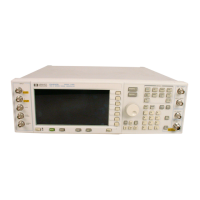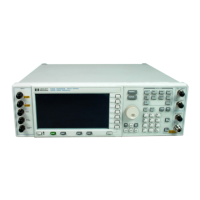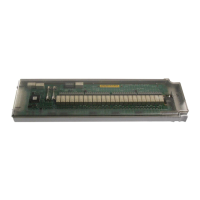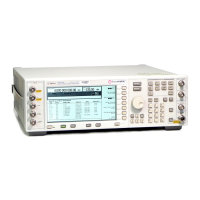ESG-D Series Option H98 Signal Generators Programming Information
Getting Started with SCPI
Manual Supplement 5-3
Standard Notation
This section uses several forms of notation that have specific meaning:
Command
Mnemonics Many commands have both a long and a short form and you must use
either one or the other (SCPI does not accept a combination of the two).
Consider the
FREQuency command, for example. The short form is FREQ
and the long form is FREQUENCY. This notation type is a shorthand to
document both the long and short form of commands. SCPI is not case
sensitive, so
fREquEnCy is just as valid as FREQUENCY, but FREQ and
FREQUENCY are the only valid forms of the FREQuency command.
Angle
Brackets Angle brackets indicate that the word or words enclosed represent
something other than themselves. For example,
<new line> represents the
ASCII character with the decimal value 10. Similarly,
<END> means that
EOI is asserted on the GPIB interface. Words in angle brackets have much
more rigidly defined meaning than words shown in ordinary text. For
example, this section uses the word “message” to talk about messages
generally. But the bracketed words
<program message> indicate a
precisely defined element of SCPI. If you need them, you can find the exact
definitions of words such as
<program message> in a syntax diagram.
More About Commands
Query and Event Commands
You can query any value that you can set. For example, the presence of the signal
generator
FREQuency:OFFSet command implies that a FREQuency:OFFSet? also exists. If
you see a command ending with a question mark, it is a query-only command. Some
commands are events and cannot be queried. An event has no corresponding setting if it
causes something to happen inside the instrument at a particular instant.
Implied Commands
Implied commands appear in square brackets. If you send a subcommand immediately
preceding an implied command, but do not send the implied command, the instrument
assumes you intend to use the implied command and behaves just as if you had sent it.
Notice that this means that the instrument expects you to include any parameters
required by the implied command. The following example illustrates equivalent ways to
program the signal generator using explicit and implied commands.
An example signal generator command,
FREQuency[:CW], with and without the implied
command:
FREQuency:CW 500 MHz using explicit commands
FREQuency 500 MHz using implied commands
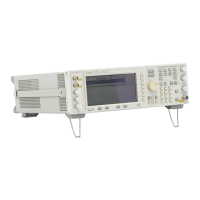
